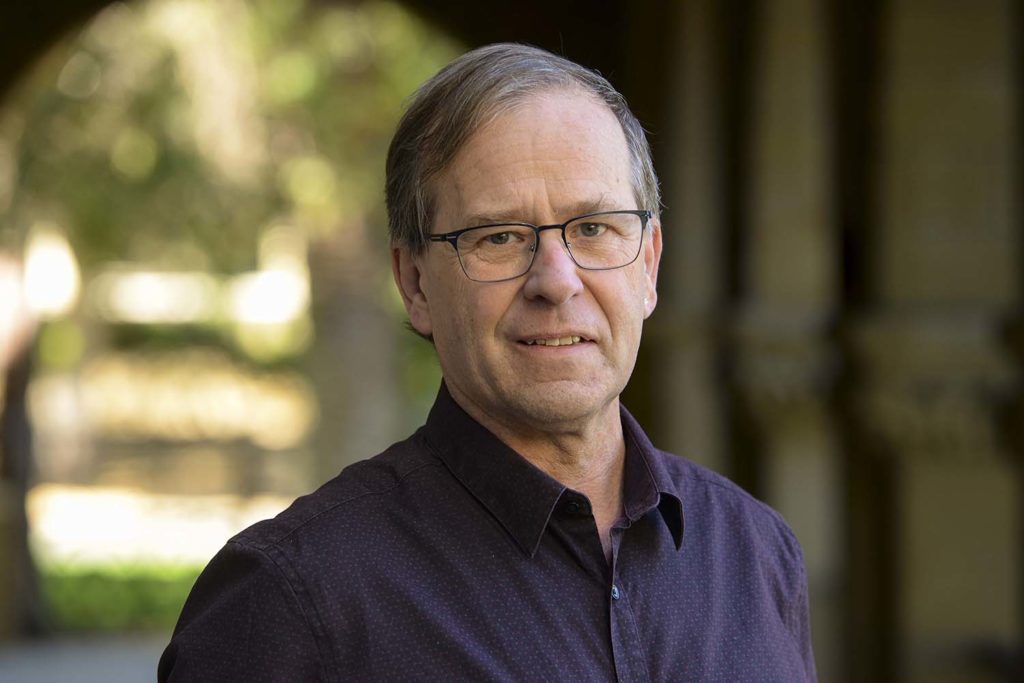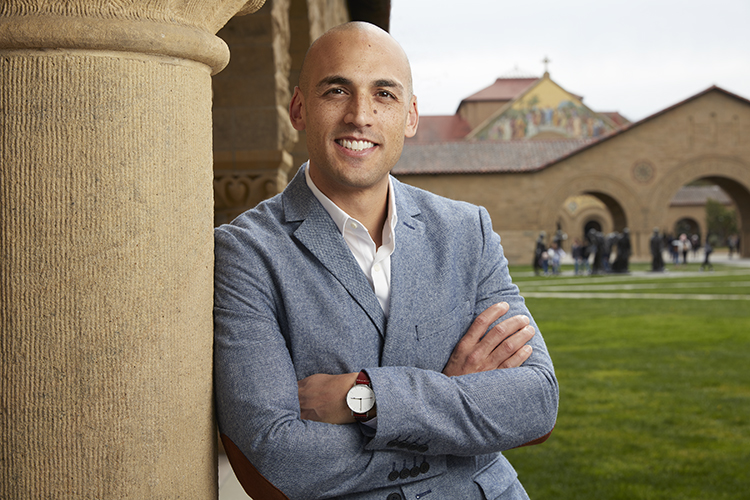Stanford faculty and guest speakers from around the country examine issues of race in STEM fields
A new three-quarter sequence of courses provides insights from scholars around the nation on research related to race in the fields of science, technology and medicine, as well as their own lived experiences.
For many, the impact of the Black Lives Matter movement and the murders of George Floyd and too many other people of color was a wake-up call. “It was clear it was another moment in the long, terrible history of racial injustice in the U.S.,” said Paul N. Edwards, director of Stanford’s Science, Technology and Society program in the School of Humanities and Sciences. “Since STS is all about how societies interact with science, technology and medicine, I saw it as an important time to showcase how Black scholars, in particular, see and study issues of race.”
The result is a three-course sequence, Race in Science, Technology, and Medicine, that debuted in fall 2020, co-sponsored by 19 different departments and programs across campus, including the Ethics, Society and Technology Hub. The sequence virtually brings together Black, Indigenous and other scholars and professionals of color (BIPOC) from around the country to explore the intersections of race, racism and scientific practice and to share their personal experiences.
“We’ve created a space where well-established BIPOC scholars get to speak candidly about how they design their work for equity and for justice,” said Jasmine Reid, a doctoral candidate in the Department of Anthropology and the TA for the course. “Stanford matriculates so many innovators and entrepreneurs, and if our students graduate with that entrepreneurial spirit and an eye to pursuing justice, I think we’ve done our job.”
Malaysia Atwater, ’23, said she enrolled in the class this quarter after noticing that many conversations around ethics in technology failed to mention race. “As a Black woman, I am very cognizant of the impact of race in all different areas but being able to hear the experiences of Black female speakers and other speakers from marginalized communities has broadened my understanding of that intersection,” she said.
Providing role models
The issue is an important one, Edwards said, because Black, Indigenous and other people of color are still underrepresented in many scientific fields. The problem starts very early, often in middle and high school, with minority students taking fewer STEM courses than their peers, he noted.
And the ones who do decide to pursue STEM careers have fewer role models to look up to. “Prior to taking this class, I was interested in national and cybersecurity but did not see it as either a feasible or a desirable profession,” Atwater said. “I never saw people who looked like me in positions of power.”
However, after Ambassador Bonnie Jenkins, recently nominated to be the Under Secretary for Arms Control and International Security Affairs in the Biden Administration, spoke to the class about international security, Atwater said she saw new possibilities for herself in the field.
A recent speaker in this quarter’s class focusing on race in technology was Forrest Stuart, an associate professor of sociology at Stanford, who discussed his book, Ballad of the Bullet: Gangs, Drill Music, and the Power of Online Infamy (Princeton University Press, 2020). The book draws on two years of ethnographic fieldwork and sheds light on the manifestations and meanings of urban inequality in the digital age.
As someone who studies urban poverty, policing and criminalization, Stuart said he was eager to participate in the course to engage in conversations about the consequential, but often hidden, ways that the development and proliferation of seemingly “objective” technologies impact us.
These include everything from consumer-facing social media platforms to our governments’ classification and risk assessment algorithms. “These all can function in ways that reproduce existing social inequalities, but also create historically new manifestations of injustice,” he said.
He also noted that in engineering, computer science and similar fields, efforts to understand, model and even predict human behavior are often based on erroneous, sometimes racist, assumptions about the conditions and cultures of underrepresented communities. And those long-standing assumptions can be difficult to change.
“When members of those communities enter these fields and try to correct those assumptions, they’re too often met with skepticism, cast off as ‘unscientific,’ or simply ignored,” he said.
Deepening commitment to action
In a mid-quarter anti-racism workshop, students met in small groups to reflect on their own experiences of race, including racial exclusion at Stanford. “We also gave them the opportunity to brainstorm how they would bring an anti-racist orientation to their own work, and at the end of the workshop, one of our graduating students shared that the workshop helped her realize she would restrict her job search only to positions that advanced social justice,” Reid said.
Through the course, Reid, whose own work examines how race and racism structure spatial justice and political action in South Africa, said she hopes all students see that it is possible to lean into their gifts while also prioritizing justice for the oppressed. “I think that’s a message that all students, staff and faculty benefit from hearing,” she said. “I hope that our class inspires other courses and lecture series, where people can develop a shared language and shared goals about how to be explicitly anti-racist in their work.”
Gabe Hillman Alvarez, ’21, said he enrolled in the series in order to deepen the personal commitment he made to anti-racism after the uprisings during the summer of 2020. As an engineering physics major with a minor in mathematics, his interest was particularly focused on race issues in STEM.
“The content and themes of the series have resonated deeply, equipped me with many tools with which to contribute to the dismantling of institutions and practices of oppression, and instilled in me the understanding that my learning must be accompanied by action which disrupts the status quo,” he said.
Along with factors outside the class, Alvarez credits the course with pushing him in new directions. “I have for the first time joined student activist groups, volunteered my time for progressive political candidates and human rights organizations, and pivoted careers from aerospace to terrestrial clean energy,” he said. He also noted that he has had countless conversations with coworkers, managers, professors, friends and family about the complex ways race and racism have shaped relationships, institutions and lives.
Outstanding scholarship
Another goal of the course is to showcase the vast depth and breadth of outstanding research being done by Black, Indigenous and scholars of color around the nation and the struggles many have faced in their professions.
Recent speakers, who joined the class from around the country via Zoom, included sociologist Alondra Nelson, the newly named Deputy Director for Science and Society for the White House Office of Science and Technology Policy, and Chanda Prescod-Weinstein, an assistant professor of physics at the University of New Hampshire who is one of fewer than 100 Black American women to earn a doctorate in physics.
The course supports the university’s goal of creating opportunities for conversations about diversity, equity and inclusion for the campus community.
Each quarter of the sequence is devoted to a different aspect of STEM careers, with the focus on science in the fall, technology during winter and medicine in the spring. Most events in the sequence are open to anyone in the Stanford community.

